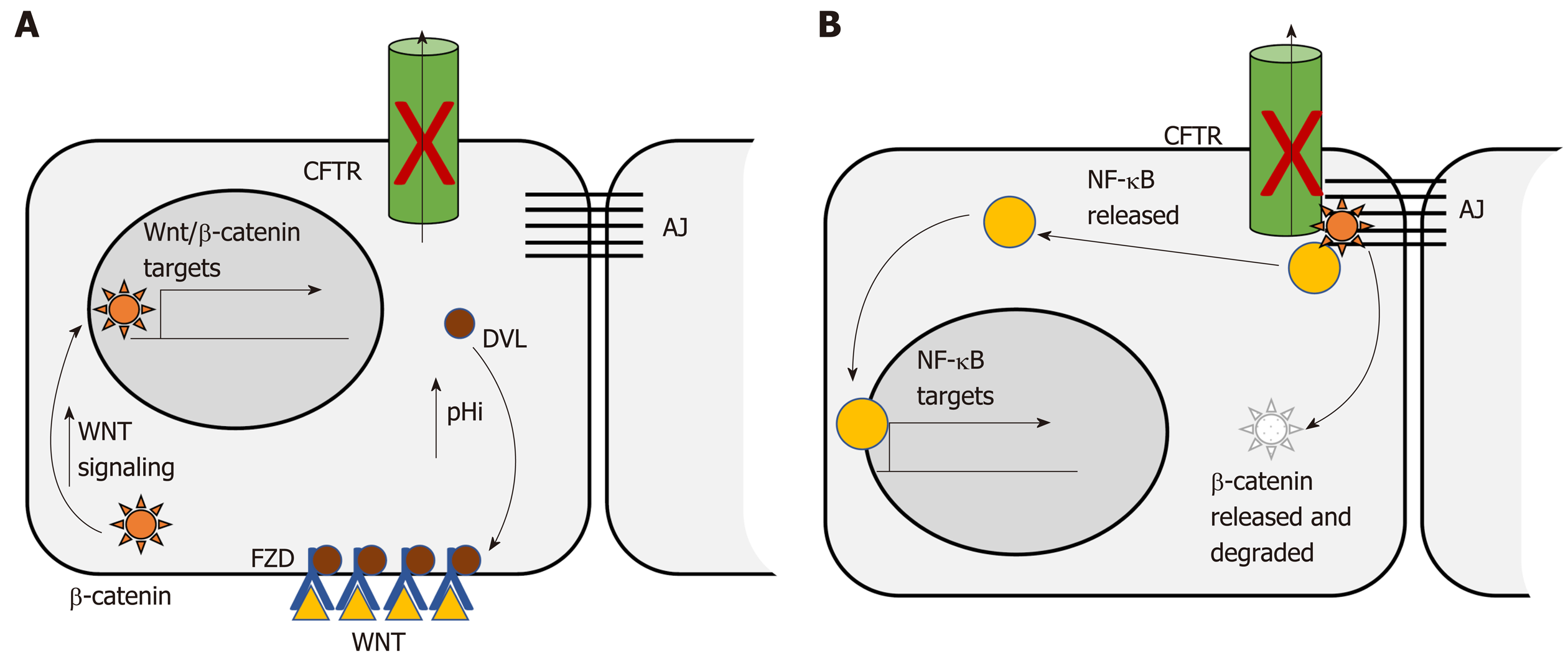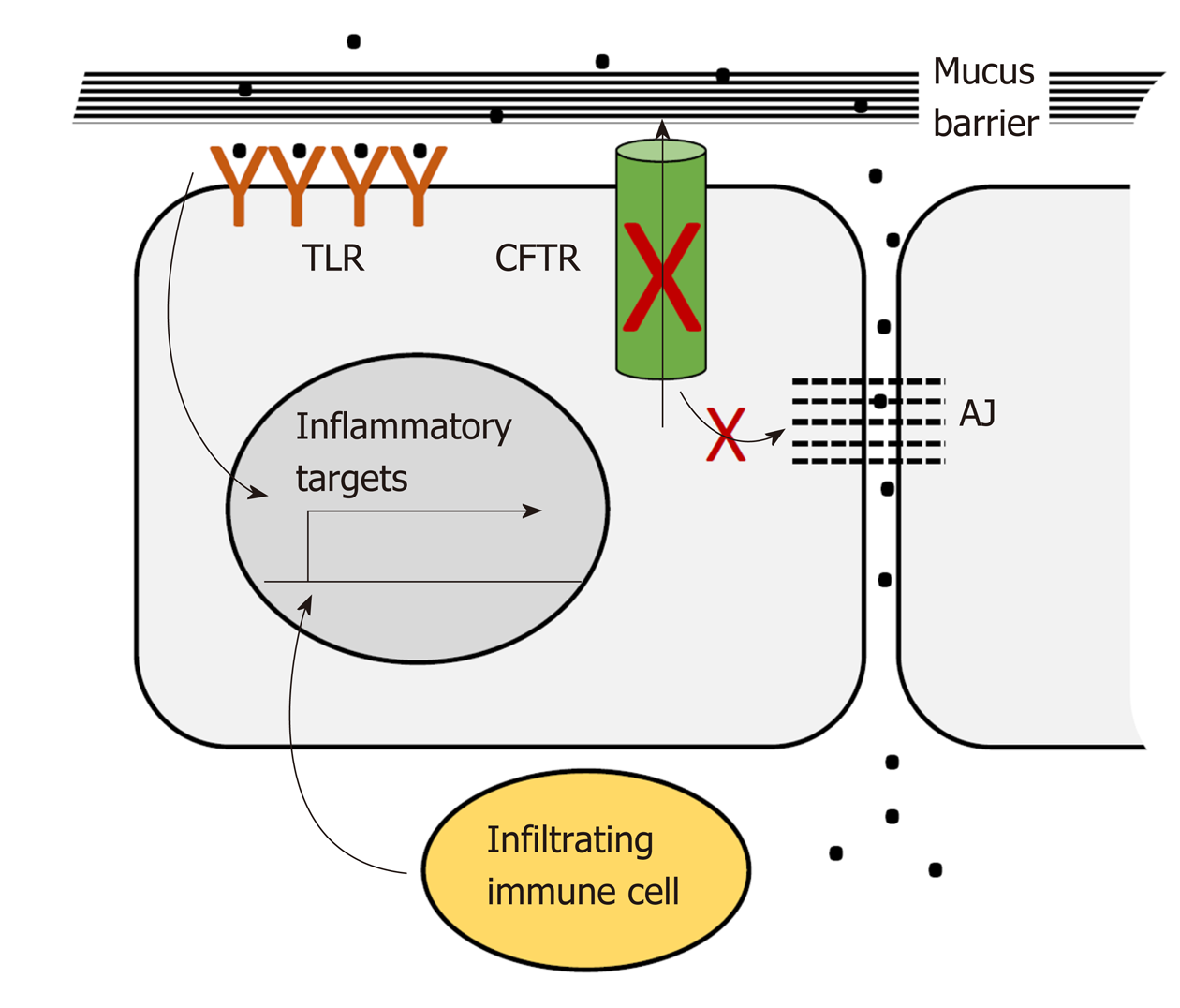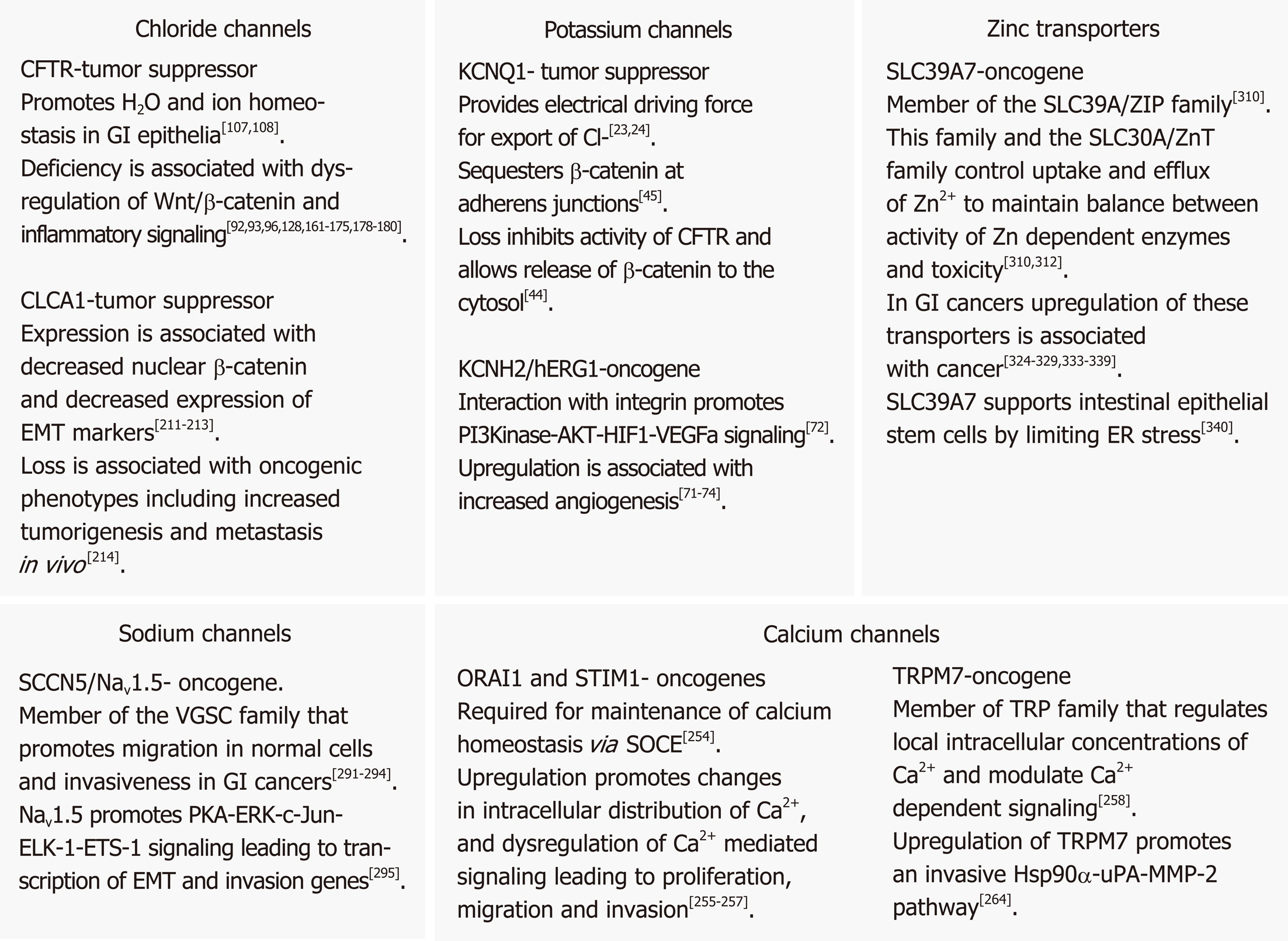Copyright
©The Author(s) 2019.
World J Gastroenterol. Oct 14, 2019; 25(38): 5732-5772
Published online Oct 14, 2019. doi: 10.3748/wjg.v25.i38.5732
Published online Oct 14, 2019. doi: 10.3748/wjg.v25.i38.5732
Figure 1 Two models for the effect of CFTR deficiency on Wnt/β-catenin signaling.
A: CFTR deficiency promotes Wnt/β-catenin signaling. CFTR deficiency causes increased intracellular pH. Increased pH promotes association with Dishevelled (DVL) at the membrane and with the Wnt receptor Frizzled (FZD). DVL association with FZD enhances Wnt/β-catenin signaling leading to increased nuclear localization of β-catenin. Nuclear β-catenin promotes transcription of genes involved in proliferation, survival and stemness[93]; B: CFTR deficiency inhibits Wnt/β-catenin signaling. CFTR deficiency releases membrane associated β-catenin to the cytosol where it is degraded thus decreasing Wnt/β-catenin activity. Loss of β-catenin releases NF-κB which translocates to the nucleus where it promotes transcription of inflammatory targets[145]. FZD: Frizzled; DVL: Dishevelled; AJ: Adherens junctions.
Figure 2 CFTR deficiency disrupts epithelial barrier integrity.
CFTR deficiency disrupts the mucin barrier and adherens junctions. This allows bacterial contact with the apical and basal surfaces of the epithelial layer. Contact with the apical layer stimulates inflammatory signaling via toll-like receptors. Contact with the basal layer leads to immune cell infiltration which results in additional inflammatory signaling. AJ: Adherens junctions; TLR: Toll-like receptors.
Figure 3 Oncogenic mechanisms of selected ion channels.
Because ion channels influence the basic biochemical environment of the cell as well as complex interactions with other proteins, they have profound and pleiotropic effects on cell function. As a result, it is often difficult to determine specific mechanisms for oncogenic phenotypes. However, progress has been made in defining mechanisms in some cases. This figure shows examples from each category of channels with accompanying pathways linking dysregulation of channel function to tumorigenesis. For additional information and references please see text and Tables 1-5. GI: Gastrointestinal; EMT: Epithelial to mesenchymal transition; TRP: Transient receptor potential; SOCE: Store-operated calcium entry; VGSC: Voltage-gated sodium channels; STIM1: Stromal interaction protein 1.
- Citation: Anderson KJ, Cormier RT, Scott PM. Role of ion channels in gastrointestinal cancer. World J Gastroenterol 2019; 25(38): 5732-5772
- URL: https://www.wjgnet.com/1007-9327/full/v25/i38/5732.htm
- DOI: https://dx.doi.org/10.3748/wjg.v25.i38.5732











